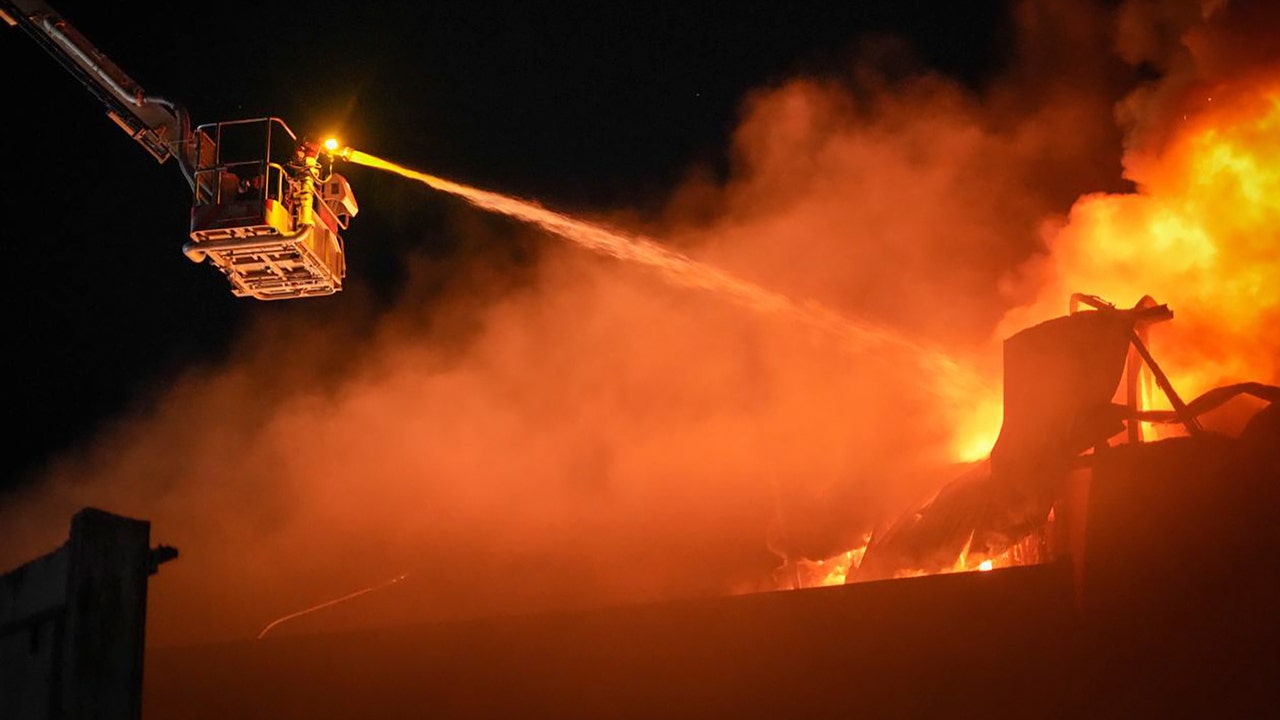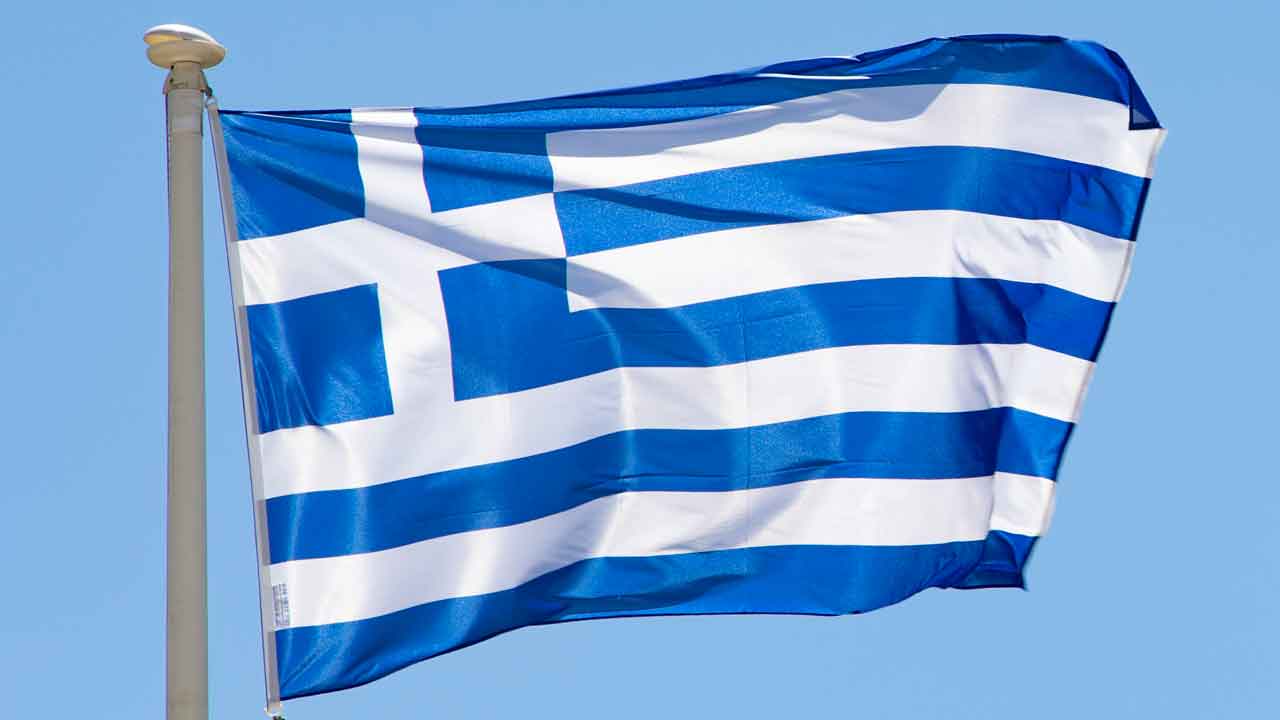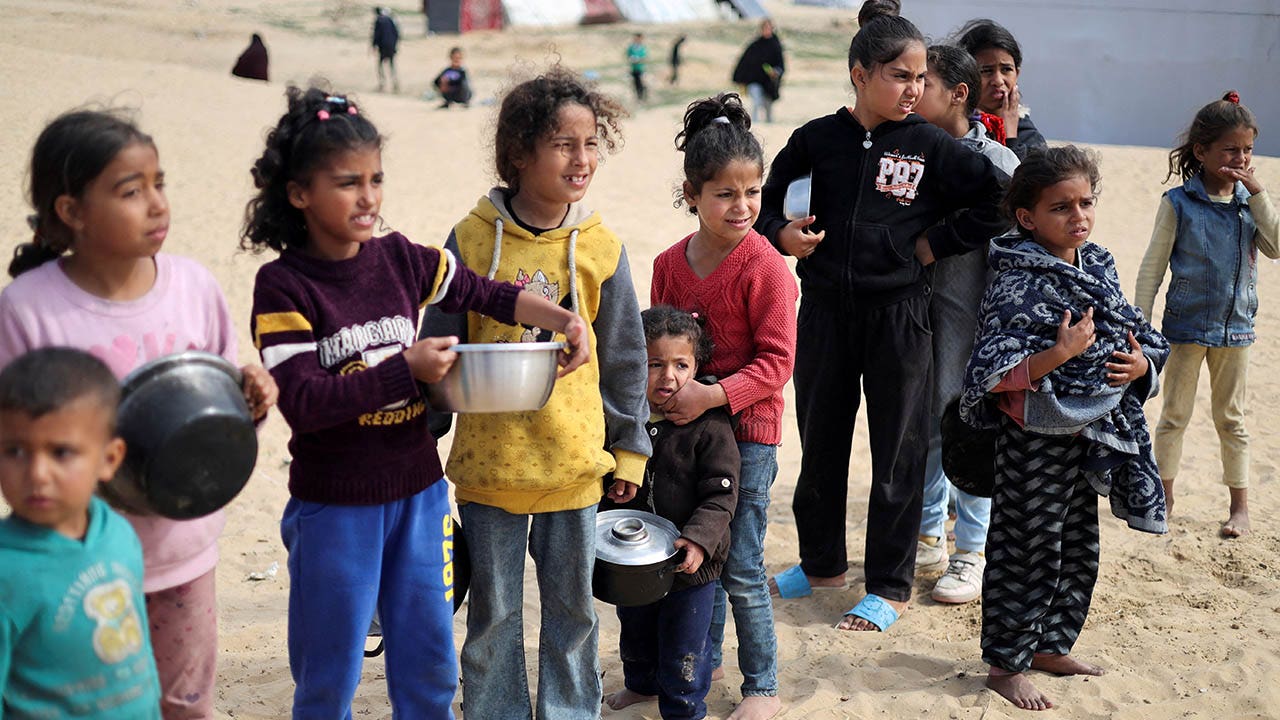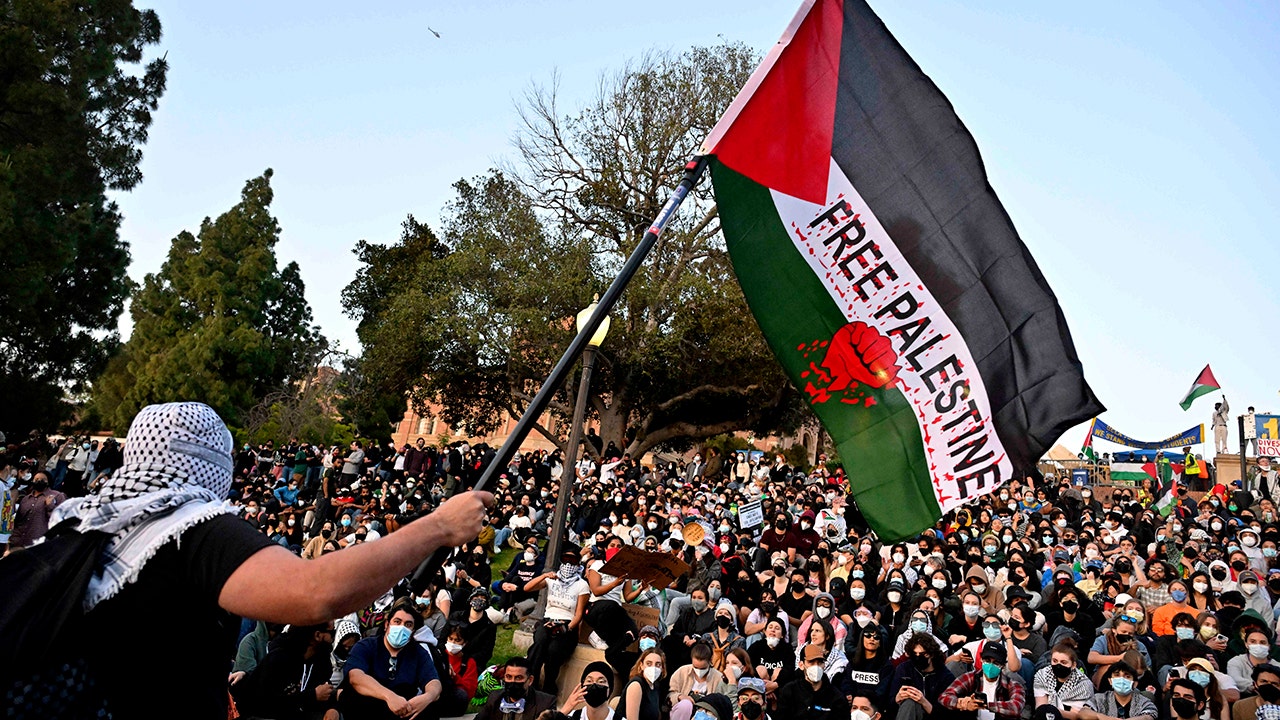For many, it will be the last big commemoration. The last reunion.
Eighty years after Allied armies invaded the beaches of Normandy, marking a definitive turning point in World War II, those veterans who are still alive and sound enough are expected to return to France this week from the United States, Britain and Canada to commemorate the moment — gingerly, slowly, happily.
They number less than 200. Their average age is about 100.
As some of the veterans arrived on Monday, descending from a hulking 767 onto the tarmac of the small Deauville airport — sometimes helped by multiple aides — many of those there to greet them grew teary in between their bursts of applause.
For a place saturated in the history of that grand landing, when some 156,000 Allied soldiers arrived on the coast and began to push the occupying Germans out of Normandy and then out of the rest of France, there is a deep sense of nostalgia.
“It’s very emotional,” said the airport director, Maryline Haize-Hagron, who like most Normandy natives, has an intimate story of D-Day. Her grandfather Henri Desmet, after watching American parachutists land in the marshes near his farm on June 6, used his flat-bottom boat to row dozens to dry land so they could continue fighting.
“It’s such an honor to be able to welcome them back,” she said.
Mr. Desmet, like most witnesses, is dead now. And this anniversary comes at a time that feels darkly critical — there is a war in Europe, far-right movements are gaining ground across the continent, there is a shifting politics of anger.
The veterans, for their part, have individual reasons for returning. Some come to honor their fallen comrades. Others want to enjoy the pageantry of it all, one last time.
“These people love us so much. It’s overwhelming,” said Bill Becker, 98, moments after his arrival on the tarmac, where a large crowd of children and dignitaries, including France’s first lady, Brigitte Macron, greeted him.
Mr. Becker was a top-turret gunner on covert missions for America’s freshly created Office of Strategic Services — the predecessor to the C.I.A. His crew delivered supplies and secret agents to Resistance members behind enemy lines, flying a black B-24 Liberator on moonlit nights.
His suitcase had been set out in his bungalow in a retirement community in Hemet, Southern California, for months — a totem of hope that he’d return to France, despite his myriad health issues.
“I made it,” he said with a tired smile.
If this is to be the last big commemoration of the fallen — and celebration of liberty — to feature so many veterans, then it will also be the biggest. The program for the week of events across a 50-mile stretch of beaches runs more than 30 pages — with concerts, parades, parachute drops, convoys and ceremonies. President Emmanuel Macron of France is presiding over eight commemorations in three days. Two dozen heads of state are expected, including the Ukrainian president, Volodymyr Zelensky.
On the tarmac at Deauville, an American Army band played jazz-swing classics, and members of the Fourth Infantry Division formed an honor guard. A group of World War II history enthusiasts stood by their antique army jeeps, wearing 80-year-old uniforms. Children from a nearby elementary school waved American and French flags.
Emerging from the aircraft, each veteran was presented to the crowd via bullhorn. Some saluted. Others waved.
“I’m going to be 100,” one yelled triumphantly.
A battalion of wheelchairs awaited the veterans’ arrival.
“This is going to be the last hurrah,” said Kathryn Edwards, who, along with her husband, Donnie Edwards, runs the Best Defense Foundation, a nonprofit that shepherded 48 American veterans to Normandy for a nine-day commemoration trip.
“Everything we do now, we want to blow their socks off,” Ms. Edwards said.
The first time Mr. Edwards brought four World War II veterans to France to commemorate D-Day, in 2006, they jumped into the back of his rented van, were able to climb steps into rooms in a château and ate at whatever restaurant they could find. At the time, Mr. Edwards was a professional football player with the San Diego Chargers who enjoyed attending re-enactment camps for World War II battles during the off-season.
Seeing how crowds cheered as the veterans passed in parades through small villages in Normandy and the Netherlands, he decided he needed to bring others back.
“Every vet needs to come back and experience this,” Mr. Edwards said. “To know what they did is still respected and honored.” He continued for years to do so out of his own pocket. Then in 2018, he and his wife founded the foundation.
Over the years, the Edwardses have had to make changes. No more vans. No more stairs. No more last-minute restaurants, where food might upset a 100-year-old constitution.
This year, the veterans are accompanied by a medical staff of 15, including a physiotherapist and a urologist.
Every veteran is partnered with a personal caregiver. The schedule has been lightened to offer more rest time.
The French government’s intention was to shave down ceremonies to an hour so that they’d be less taxing for the centenarians, said Michel Delion, a retired army general who is helping to run the anniversary program, called Mission Libération.
Even for France — whose president has an official “memorial adviser” — the stretch of land along the landing beaches takes commemoration to a whole next level. The sides of the thin roads are dotted with commemorative plaques, statues and funerary markers. Roundabouts are decorated with antique tanks and other war equipment. The young faces of fallen soldiers look down from lamppost standards.
This week, the locals have pulled out their D-Day decorations. Even more flags — American, British, Canadian, French — flutter.
Every little village has its own dead and its own story of liberation.
In the relatively small region of Calvados, home to four of the five landing beaches, there are 600 commemorations planned, according to Stéphane Bredin, the top government administrator there.
“It’s the last time these places will welcome their veterans,” Mr. Bredin said.
Many worry about what will happen once the old soldiers are gone.
“It’s a question we’ve asked ourselves for a long time,” said Marc Lefèvre, who, as mayor of Ste.-Mère-Église for 30 years, oversaw many joyful reunions between locals and American veterans who had fought in the vicinity. The answer? “Honestly, I don’t know,” he admitted.
But, given the density of memorial sites and museums in the area, he said he hoped that the story of June 6, 1944, would endure.
Denis Peschanski, a historian who is in charge of Mission Libération’s 15-member scientific advisory board, said D-Day had become so woven into France’s identity that the memory would remain even when the veterans were gone.
“There’s the revolution,” he said, referring to the 1789 overthrowing of the ancien régime, “and the landing during World War II, when we worked together to fight the Nazis. It’s fundamental.”
The memories of veterans are increasingly disjointed and faded with time. Many didn’t talk about the war until years after, if at all.
Mr. Becker was sworn to secrecy until the 1980s, when information about his unit — known as the carpetbaggers — was declassified.
When he landed at Harrington Airfield in England in early 1945, about 10 months after D-Day and following months of training in the United States, he and his crew were taken into a room.
“They said to us, ‘If you go out of here and say anything, you’ll get shot,’” he recalled. The flight plans into enemy territory were so sensitive, only the navigator and pilot knew where they were going. Mr. Becker’s job, from his perch, was to protect against enemy planes and antiaircraft guns — critical as the crew was flying just 400 to 600 feet above ground and navigating by the light of the moon.
His plane sometimes returned with bullet holes and tree branches in its belly. His second flight was so frightening, he grew his first white hair. “My knees were shaking,” he said. He was 19 at the time.
Mr. Becker never told his wife or their three children what exactly he had done during the war. Now that he can talk about it, he wants everyone to know about the carpetbaggers.
This is his second trip to take part in the commemorations in Normandy, and it is particularly poignant as he has been joined by the only other remaining member of his crew — Hewitt Gomez, 99.
For months, Mr. Becker has been talking about buying a bottle of Champagne for them to share. A reunion within a reunion.
“I feel very good that we did something to help win the war,” Mr. Becker said. “We did something in this world that made it better.”






